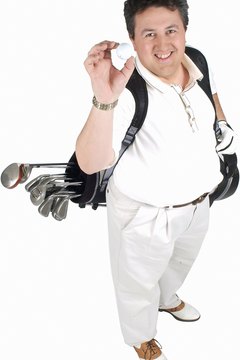It's startling how many golfers spend thousands of dollars to get just the right clubs, then lay out another hundred or two for golf shoes. They then pay as little as they can for golf balls, not realizing that they will affect their scores--almost as much as those fancy clubs.
Step 1
Assess the level of your game before you pick out a golf ball. If you are a beginner, you need a golf ball that is durable and will add distance to your shots.
If you are a more advanced golfer, you might choose a ball that allows you more control of your shots. And if you have a low handicap, you probably can sacrifice durability because you don't mis-hit many shots that can do damage to the ball.
Step 2
Recognize that golf ball manufacturers produce three different types of balls, each with different properties. Some make the two-piece ball that will allow the golfer to get the most distance from his shots.
Also, those golf balls are have a hard outside cover that is very hard to cut. These are the balls that you should choose if you are just beginning the game.
Step 3
Choose a three-piece golf ball if you are a low handicap golfer.
These balls sacrifice some distance but make up for by increasing the amount of spin, which aids the golfer in controlling his shots. They can do this because of a softer cover, usually made of Balata, and a solid core that is wrapped with a third material. Its softness allow the golfer the have more “feel.”
Step 4
Pick a golf ball that combines the properties of both. To appeal to the most golfers, manufacturers make a third type of golf ball--an all-purpose variety.
These balls are more durable and impart less spin than the three-piece ball. These balls are a good compromise for most intermediate players.
Step 5
Choose the right compression for your game. Most manufacturers promote balls with different compressions, or softness.
If you hit the ball a short distance, consider a ball with a 60-70 compression. If you hit the ball a long way, you're ready for a ball with a 100 compression.

